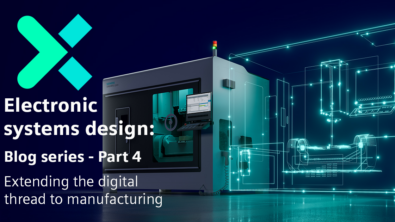Better electronics product design with integrated lifecycle management and data-driven decisions

How much development time is your organization losing because of silos of systems and processes with manual handoffs and redundancy? Think about the wasted time spent chasing down the latest design data or the impact of passing outdated product information to a third-party supplier.
Organizations invest heavily in hiring the right people for teams and evaluating tools to support engineering disciplines. But, we don’t develop products individually, and assembly-line processes may not work well for today’s complex electronics. Leaving us to wonder how well our design tools and processes work together, both internally and externally.
Importance of integrated lifecycle management for electronics
Effective integrated lifecycle management improves product development performance because everyone can access the most up-to-date data and accelerates schedules by cutting redundancy and manual roadblocks.
Integrated lifecycle management: a single source of information and streamlined process for managing all aspects of the product from concept to end-of-life
When teams unlock integrated lifecycle management, they also unlock data-driven change management. Data-driven change management is essential for system development as it equips designers and decision-makers with the information they need when they need it. Best-in-class companies leverage integrated lifecycle management to drive every decision and enable:
- Closed-loop decision making: execute changes in the context of the overall system or product architecture
- Accelerated execution: implement updates and resolve issues based on relationships to other design elements
- Efficient risk analysis: understand the impact of an update or change before implementation
Building a digital twin foundation for integrated lifecycle management
With integrated lifecycle management, teams benefit from end-to-end traceability. Product teams can see relationships between user needs, system requirements, design requirements, design specifications and the impact on eBOM, mBOM and processes.
See how integrated lifecycle management enables:
- Single source of information: one source for design data and process knowledge to foster collaboration/reuse
- Integrated design processes: leverage the investment in the systems used across your global enterprise
- Easy sharing of information: connected information and processes from within the native design environment
- Integrated BOM: a common product-level BOM contains all mechanical, electronic and software data
As products grow more complex, it’s more challenging for disconnected design teams to keep up. Learn more about getting started with integrated lifecycle management in this on-demand webinar.


